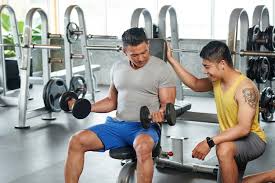In today’s fast-paced world, maintaining a healthy lifestyle is more important than ever. With rising stress levels, sedentary jobs, and unhealthy eating habits, fitness has become a necessity rather than a choice. TimesHealthMag Fitness is your go-to resource for expert advice, workout routines, nutrition tips, and wellness strategies to help you achieve your health goals.
In this comprehensive guide, we’ll explore the key aspects of fitness, including:
- The Importance of Fitness in Modern Life
- Different Types of Workouts for All Fitness Levels
- Nutrition and Diet for Optimal Performance
- Mental Wellness and Its Connection to Physical Fitness
- How to Stay Motivated on Your Fitness Journey
- Latest Trends in Fitness and Wellness
Let’s dive in!
1. The Importance of Fitness in Modern Life
Fitness is not just about looking good—it’s about feeling great, improving longevity, and enhancing overall quality of life. Here’s why fitness should be a priority:
A. Boosts Physical Health
Regular exercise helps:
- Strengthen muscles and bones
- Improve cardiovascular health
- Enhance flexibility and mobility
- Reduce the risk of chronic diseases like diabetes, obesity, and hypertension
B. Enhances Mental Well-being
Physical activity releases endorphins, the “feel-good” hormones, which help:
- Reduce stress and anxiety
- Combat depression
- Improve sleep quality
- Boost cognitive function
C. Increases Energy Levels
A sedentary lifestyle often leads to fatigue. Engaging in regular workouts improves blood circulation, oxygen flow, and stamina, keeping you energized throughout the day.
D. Promotes Longevity
Studies show that people who exercise regularly live longer, healthier lives by reducing the risk of age-related diseases.
2. Different Types of Workouts for All Fitness Levels
Whether you’re a beginner or a fitness enthusiast, there’s a workout style for everyone. Here are some popular options:
A. Strength Training
- Uses weights, resistance bands, or bodyweight exercises
- Builds muscle mass and increases metabolism
- Examples: Squats, deadlifts, bench presses
B. Cardiovascular Exercises (Cardio)
- Improves heart health and burns calories
- Includes running, cycling, swimming, and HIIT workouts
C. Yoga and Pilates
- Enhances flexibility, balance, and core strength
- Reduces stress and improves posture
D. Functional Training
- Mimics everyday movements to improve mobility
- Great for injury prevention and athletic performance
E. High-Intensity Interval Training (HIIT)
- Short bursts of intense exercise followed by rest
- Burns fat efficiently in less time
Pro Tip: Mix different workout styles to prevent plateaus and keep your routine exciting!
3. Nutrition and Diet for Optimal Performance
Exercise alone isn’t enough—nutrition plays a crucial role in fitness. Here’s how to fuel your body right:
A. Macronutrients: The Building Blocks
- Proteins (chicken, fish, tofu) – for muscle repair
- Carbohydrates (whole grains, fruits) – for energy
- Fats (avocados, nuts) – for hormone regulation
B. Micronutrients: Vitamins & Minerals
- Essential for immune function, bone health, and recovery
- Include leafy greens, berries, and nuts in your diet
C. Hydration is Key
- Drink at least 3-4 liters of water daily
- Hydration improves performance and recovery
D. Pre- and Post-Workout Nutrition
- Before workout: Carbs + protein (banana + peanut butter)
- After workout: Protein + healthy fats (chicken + quinoa)
Avoid: Processed foods, sugary drinks, and excessive alcohol.
4. Mental Wellness and Its Connection to Physical Fitness
A healthy mind leads to a healthy body. Here’s how fitness impacts mental wellness:
A. Reduces Stress and Anxiety
- Exercise lowers cortisol (stress hormone) levels
- Yoga and meditation enhance relaxation
B. Boosts Confidence and Self-Esteem
- Achieving fitness goals builds self-discipline
- Improves body image and mental clarity
C. Enhances Brain Function
- Increases blood flow to the brain, improving memory and focus
- Reduces the risk of neurodegenerative diseases
Tip: Incorporate mindfulness practices like meditation alongside workouts for holistic wellness.
5. How to Stay Motivated on Your Fitness Journey
Staying consistent is the biggest challenge. Here’s how to stay on track:
A. Set Realistic Goals
- Start small (e.g., “30-minute walk daily”)
- Track progress with apps or journals
B. Find a Workout Buddy
- Accountability increases commitment
- Makes workouts more enjoyable
C. Mix Up Your Routine
- Try new workouts to avoid boredom
- Join fitness classes or online challenges
D. Reward Yourself
- Celebrate milestones (e.g., a cheat meal after a month of consistency)
6. Latest Trends in Fitness and Wellness
Fitness trends evolve every year. Here are some popular ones in 2024:
A. Wearable Fitness Tech
- Smartwatches track heart rate, steps, and sleep
B. Virtual Workouts & AI Trainers
- Online fitness programs and AI-guided sessions
C. Recovery Fitness
- Focus on stretching, foam rolling, and cryotherapy
D. Plant-Based Fitness Nutrition
- More athletes adopting vegan diets for better performance
Final Thoughts
Fitness is a lifelong journey, not a destination. TimesHealthMag Fitness is here to guide you with expert-backed advice, workout plans, and wellness tips to help you stay on track.














